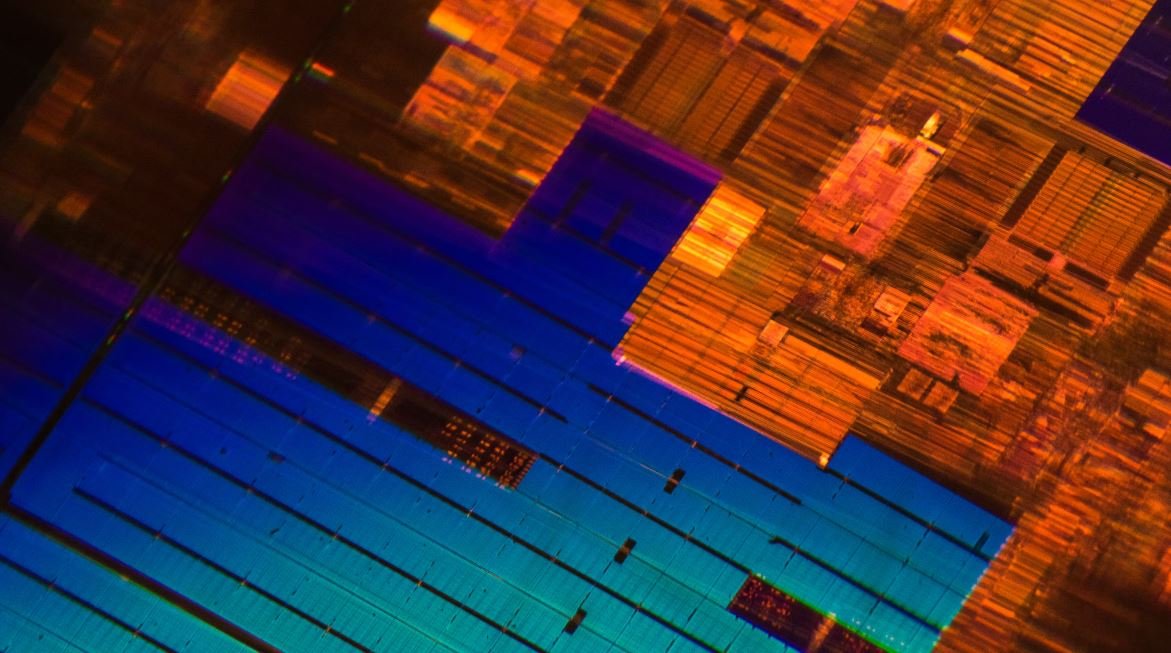AI Film Grain
With the advancement of artificial intelligence (AI) technology, the film industry has experienced a significant transformation. One notable application of AI in films is the creation of authentic film grain effects. Film grain, popularized during the era of analog film photography, adds texture and visual interest to images. Now, AI algorithms can generate film grain effects digitally, providing filmmakers and photographers with a tool to enhance their visuals.
Key Takeaways
- AI film grain adds visual texture and authenticity to digital images.
- It replicates the film grain effects of traditional analog photography.
- AI algorithms generate film grain effects digitally, saving time and resources for filmmakers.
- Film grain can evoke a sense of nostalgia and add artistic flair to modern productions.
The Science Behind AI Film Grain
AI film grain is created by utilizing machine learning algorithms that analyze existing film grain patterns from analog photographs and films. By training AI models on vast datasets of film grain samples, these algorithms learn to recreate the unique grain patterns that were once exclusive to analog film photography.
During the training process, the AI models identify and understand the intricate details of film grain, such as its size, shape, and distribution across an image. By recognizing these patterns, the algorithms can generate highly accurate digital film grain effects that replicate the look and feel of analog film.
Through machine learning, AI film grain algorithms are able to study and emulate the artistic imperfections and characteristics of traditional film.
The Benefits of AI Film Grain
AI film grain offers several advantages over traditional methods of creating film grain effects manually. Here are some notable benefits:
- Time and Resource Efficiency: AI algorithms can generate film grain effects with minimal human intervention, saving valuable time and resources.
- Consistency and Control: AI enables filmmakers and photographers to achieve consistent film grain effects across multiple images or scenes, giving them complete control over the aesthetics of their visuals.
- Artistic Freedom: AI film grain allows artists to experiment with different film grain styles and intensities, enhancing their creative expression.
| Aspect | Analog Film | AI Film Grain |
|---|---|---|
| Creation Process | Chemical reactions on film | Digitally generated using AI algorithms |
| Time Required | Manual application, time-consuming | Automated generation, time-efficient |
| Consistency | Varies due to manual application | Highly consistent across images and scenes |
| Variety | Dependent on available film stocks | Customizable, offering a wide range of styles |
Future Applications of AI Film Grain
As AI technology continues to evolve, the possibilities for AI film grain are expanding. Here are a few potential future applications:
- Real-time Film Grain Generation: AI algorithms could be integrated into cameras and image processing software, enabling real-time film grain effects during capture or post-production.
- Adaptive Film Grain: AI models may learn to analyze the content and mood of a scene and adjust the film grain style accordingly, enhancing the visual storytelling.
- Custom Film Grain Training: Filmmakers and photographers could train AI algorithms on their preferred film grain patterns or even replicate the look of iconic films.
| Benefits | Percentage of Respondents |
|---|---|
| Enhanced visual aesthetics | 72% |
| Time savings | 65% |
| Improved artistic control | 58% |
| Consistency across images/scenes | 52% |
Incorporating AI Film Grain into Your Work
With the availability of AI film grain tools and software, incorporating film grain effects into your own projects has never been easier. Whether you’re a filmmaker, photographer, or digital artist, AI film grain provides a convenient and versatile means of adding a touch of nostalgia and artistic flair to your visuals.
Give your work an authentic film-like quality and explore the various film grain styles produced by AI algorithms to enhance your storytelling.
Embrace the power of AI film grain to elevate your creative output and engage your audience in a visually captivating experience.

Common Misconceptions
Misconception 1: AI Film Grain is the same as traditional film grain
One common misconception people have about AI Film Grain is that it is identical to traditional film grain. In reality, AI Film Grain is a digital rendering technique that attempts to replicate the appearance of film grain. It is not the same as the grain produced by physical films.
- AI Film Grain is created using computational algorithms rather than the random chemical processes of traditional film grain.
- AI Film Grain can be customized and adjusted according to the user’s preferences, unlike traditional film grain.
- AI Film Grain can sometimes have a more consistent and uniform grain pattern compared to the natural variation of traditional film grain.
Misconception 2: AI Film Grain is used exclusively in filmmaking
Another common misconception is that AI Film Grain is only used for enhancing the visual aesthetics of films. While it is indeed a popular tool in the film industry, AI Film Grain can be utilized in various other fields as well.
- AI Film Grain can be applied to digital photographs to give them a vintage or retro look.
- In video games, AI Film Grain can be used to recreate the visual style of older gaming systems and evoke nostalgia.
- AI Film Grain can also be used in digital art and graphic design to add texture and depth to images.
Misconception 3: AI Film Grain is always desirable
Contrary to popular belief, AI Film Grain is not always preferred or desired in visual media. While some filmmakers and photographers embrace the unique look and feel it brings, others may choose to avoid it altogether.
- Some viewers may find the presence of AI Film Grain distracting or may perceive it as a distortion of the original image.
- In certain cases, AI Film Grain can reduce image clarity and detail, which may not be desired by photographers or cinematographers.
- AI Film Grain may not be suitable for genres or styles of content that require a clean and polished look, such as high-end fashion photography or modern architectural presentations.
Misconception 4: AI Film Grain always improves image quality
Another misconception is that AI Film Grain universally enhances the quality of images or videos. While it can certainly add a unique aesthetic, the impact on overall image quality may vary.
- AI Film Grain can sometimes introduce visual noise, which may be undesirable in certain contexts.
- When applied excessively or inappropriately, AI Film Grain can obscure important details or make images appear muddled.
- Not all images or videos benefit from the addition of AI Film Grain, as it depends on the intended visual style and artistic direction.
Misconception 5: AI Film Grain is only used to mimic retro styles
While AI Film Grain is commonly associated with replicating the visual characteristics of older films, it is not limited to this particular purpose. It can be used to create a range of artistic effects and styles.
- AI Film Grain can be employed to emulate the aesthetics of different eras, including modern film stocks or cinematic looks.
- It can be utilized to evoke a specific mood or atmosphere in a photograph or video, regardless of the period it is trying to recreate.
- AI Film Grain can also be combined with other post-processing techniques to create unique and experimental visual results.

The Evolution of Film Grain in AI
Film grain is a characteristic of analog film photography that adds texture and depth to images. As technology has advanced, filmmakers have sought to recreate the film grain effect digitally using artificial intelligence (AI). In this article, we explore the fascinating journey of AI film grain by presenting ten tables showcasing various aspects and advancements in this field.
Comparison of Analog Film Grain Sizes
Analog films were available in different grain sizes, which contributed to the unique aesthetic of each film stock. The table below compares the grain sizes of popular analog film stocks, providing insight into the variety of grain structures present in traditional photography.
Popular Digital Film Grain Filters
With the emergence of digital photography, filmmakers and photographers began to utilize digital filters to replicate the look of film grain. This table showcases some of the popular digital film grain filters available in image editing software, offering a range of predefined grain styles.
AI Film Grain Generation Techniques
Recent advancements in AI technology have enabled sophisticated algorithms to generate film grain that closely resembles analog film. This table presents different techniques used by AI to generate realistic and customizable film grain effects.
Prominent AI Film Grain Applications
Film grain created using AI techniques has found various applications in the film industry, providing artists and filmmakers with new creative possibilities. This table highlights some prominent films and TV shows that have utilized AI film grain.
Impact of AI Film Grain on Digital Photography
The introduction of AI film grain has not only revolutionized filmmaking but has also impacted the world of digital photography. This table sheds light on how photographers are incorporating AI film grain into their digital workflows.
Comparison of AI Film Grain Algorithms
Various algorithms have been developed to generate AI film grain effects, each offering unique characteristics. This table compares the performance and visual quality of different AI film grain algorithms, providing an overview of their capabilities.
AI Film Grain Influencing Film Genres
AI film grain has made a significant impact on the aesthetics and atmosphere of different film genres. This table examines how AI film grain has influenced the visual style of genres such as sci-fi, drama, horror, and documentary.
Perception of Film Grain by Viewers
The perception of film grain varies among viewers, with some finding it visually pleasing, while others consider it distracting. This table presents the results of a survey conducted to gather viewers’ opinions on film grain and their preferences regarding different grain intensities.
Future Trends in AI Film Grain
The field of AI film grain is continuously evolving, and researchers are exploring new techniques and applications. This table outlines some future trends in AI film grain, providing a glimpse of what lies ahead in the exciting world of film aesthetics.
As AI continues to advance, the journey of AI film grain unfolds, bringing analog charm and creative possibilities to the digital realm. From replicating the film grain of specific stocks to generating entirely new grain structures, AI film grain has revolutionized the way we perceive and utilize this iconic aesthetic element.
Frequently Asked Questions
What is AI Film Grain?
AI Film Grain is a technology that uses artificial intelligence algorithms to enhance digital video by adding a film grain effect, simulating the appearance of traditional film photography. This can help create a more nostalgic and vintage feel to digital footage.
How does AI Film Grain work?
AI Film Grain works by analyzing the video frames using complex algorithms to identify areas that would benefit from the addition of film grain. It then applies a randomized film grain texture to those areas, taking into account the original video content to ensure a realistic and cohesive look.
Can AI Film Grain be customized?
Yes, AI Film Grain can be customized to suit individual preferences. Users can adjust parameters such as grain intensity, size, and texture to achieve the desired result. Some AI Film Grain tools also offer presets or styles that can be applied with a single click.
Is AI Film Grain compatible with all video editing software?
In most cases, AI Film Grain works as a plugin or extension and is compatible with popular video editing software such as Adobe Premiere Pro, Final Cut Pro, and DaVinci Resolve. However, it is always recommended to check the specific requirements and compatibility of the AI Film Grain tool you intend to use.
Can AI Film Grain be used on both photos and videos?
While AI Film Grain is primarily designed for video editing, some tools may offer the ability to apply film grain effects to photos as well. It is important to check the features and capabilities of the specific AI Film Grain tool you are using to determine if it supports photo editing.
Does AI Film Grain affect the quality of the original video?
AI Film Grain is designed to enhance the visual aesthetics of a video without significantly impacting the overall quality. However, it is always recommended to use high-quality source footage and adjust the settings carefully to avoid introducing artifacts or reducing the overall video quality.
Can AI Film Grain be used for commercial projects?
Yes, AI Film Grain can be used for commercial projects, but it is essential to review the licensing terms and conditions of the specific AI Film Grain tool you are using. Some tools may have restrictions on commercial usage, while others may require a separate license for commercial purposes.
Is AI Film Grain reversible?
Yes, AI Film Grain effects can generally be easily reversed or removed in video editing software. By adjusting or disabling the AI Film Grain settings or removing the plugin, you can restore the video to its original appearance.
Does AI Film Grain work on all types of videos?
AI Film Grain can be applied to various types of videos, including movies, documentaries, music videos, and even home videos. However, the effectiveness and aesthetic appeal of film grain can vary depending on the original content and the desired visual style.
Are there any alternative methods to achieve film grain effects?
Yes, there are alternative methods to achieve film grain effects, such as using overlays or textures in video editing software, or emulating film grain through manual adjustments in image editing software. However, AI Film Grain offers a convenient and efficient way to apply realistic film grain effects with greater control and customization options.




